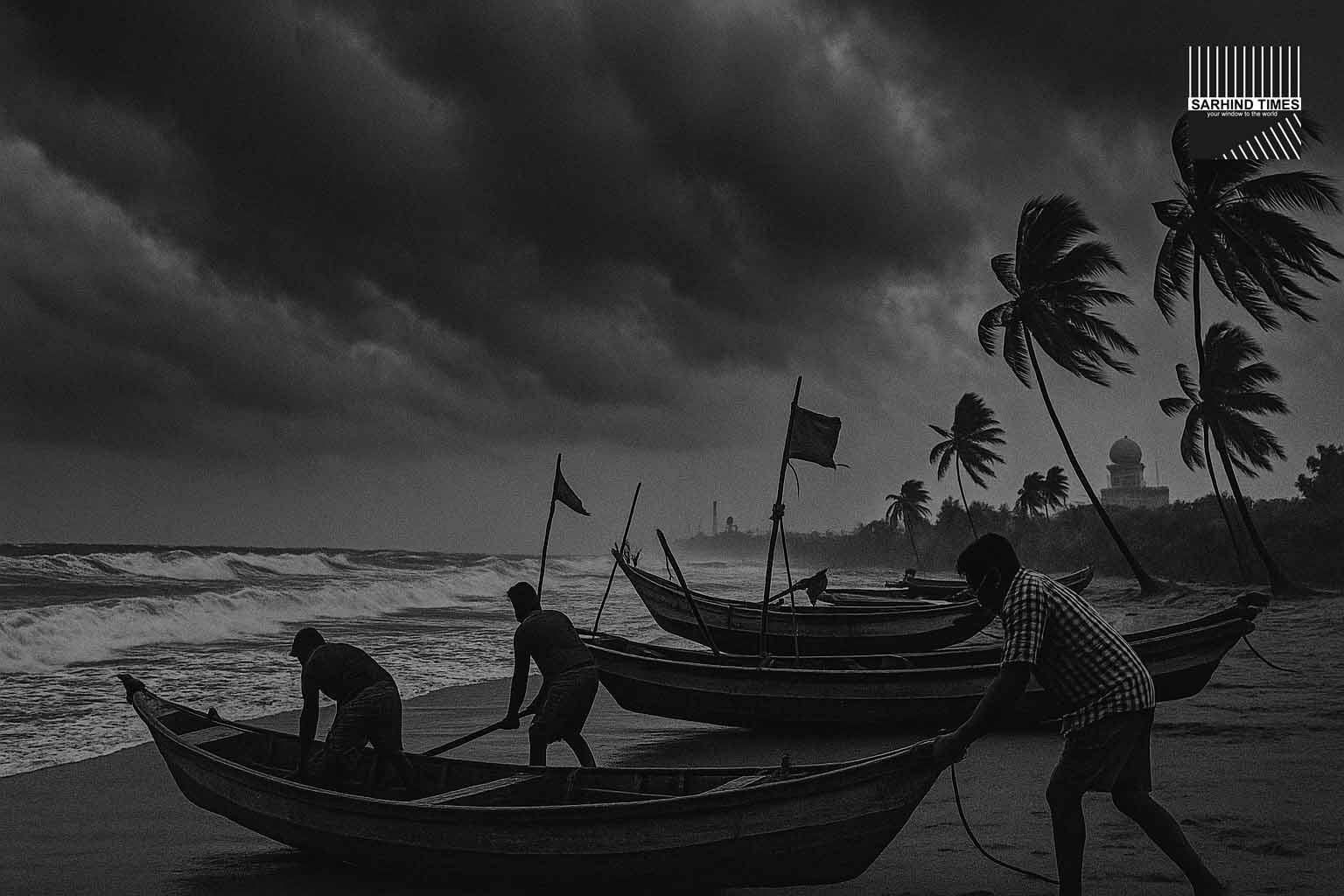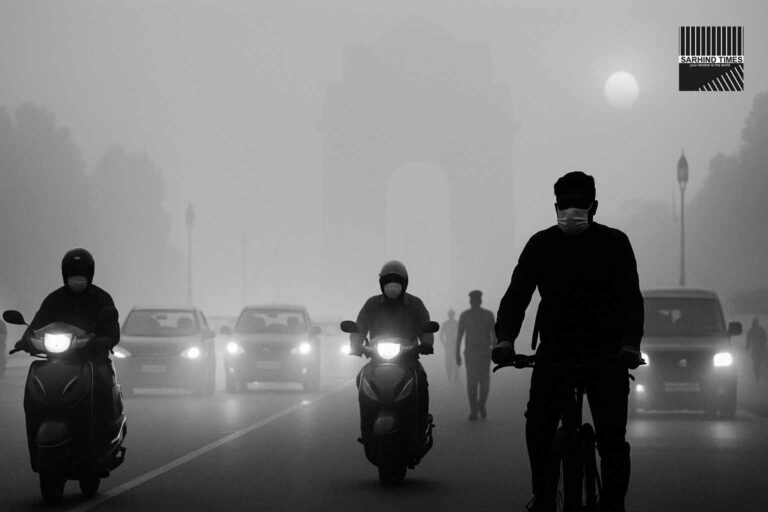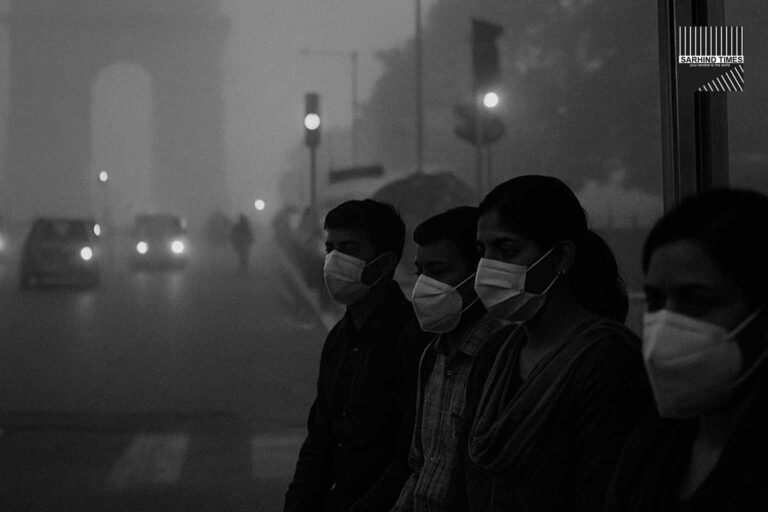Fresh monsoon remnant system could intensify into a depression; Andhra, Tamil Nadu, and Odisha put on early alert as coasts brace for rough weather.
By Sarhind Times Meteorological Bureau
New Delhi / Chennai / Visakhapatnam | October 19, 2025
The monsoon may have officially withdrawn from most of India, but the Bay of Bengal is far from calm.
The India Meteorological Department (IMD) has warned of a new low-pressure area forming over the southeast Bay around October 21, with the potential to intensify into a depression or deep depression by midweek.
The system — born out of a cyclonic circulation near the South Andaman Sea — could bring heavy to very heavy rainfall to coastal Andhra Pradesh, Tamil Nadu, and Odisha, along with squally winds and rough seas.
It’s a reminder that, in the Indian Ocean, the season of storms rarely ends on schedule.
Genesis: A Cyclone’s First Breath
Meteorologists have been tracking a well-marked low since Thursday, forming due to sea-surface temperatures above 29°C — ideal conditions for convection.
Satellite imagery from INSAT-3D shows dense cloud clusters consolidating near Car Nicobar and Little Andaman, gradually drifting northwest.
“This system is at a formative stage but bears the signature of a post-monsoon depression,” said Dr. R.K. Jenamani, senior IMD scientist.
“If wind shear remains low, we may see intensification by Tuesday or Wednesday.”
The European Centre for Medium-Range Weather Forecasts (ECMWF) and the Global Forecast System (GFS) models both align with IMD’s prediction of a west-northwest track, possibly making landfall between Nellore and Machilipatnam around October 24–25.
Coastal States on High Alert
The IMD has issued yellow and orange alerts for the following states:
- Andhra Pradesh (Oct 22–24): Heavy to very heavy rain over Chittoor, Nellore, Prakasam, East Godavari.
- Tamil Nadu & Puducherry (Oct 21–23): Widespread moderate rain, isolated heavy falls over Chengalpattu, Villupuram, and Cuddalore.
- Odisha (Oct 24–26): Light to moderate rain with isolated heavy spells over Gajapati, Puri, and Ganjam.
- West Bengal (Oct 26–27): Cloudy conditions with potential for thundershowers.
The Directorate of Fisheries in both Tamil Nadu and Andhra Pradesh has advised fishermen not to venture into the south and central Bay of Bengal from October 21 onwards. Coastal district collectors have been told to ready shelters, check drainage systems, and ensure 24×7 control rooms remain operational.
Historical Pattern: October’s Oceanic Surprises
The Bay of Bengal has a reputation for spawning late-season systems that morph into severe cyclones — Titli (2018), Gaja (2018), Gulab (2021), and Jawad (2021) all developed around this period.
This pattern stems from the post-monsoon heat buildup, when warm sea surfaces meet cooler upper air layers, creating unstable pressure gradients.
Unlike monsoon depressions that feed on widespread humidity, these late formations derive energy from localized convection and low wind shear, allowing rapid intensification.
“The transition phase from October to November is climatically volatile,” explained Prof. S. Balachandran, head of IMD Chennai.
“This is when the northeast monsoon kicks in — the atmosphere is rearranging itself, and that’s when surprises occur.”
Impact Forecast: Rain, Wind, and Waves
If the system intensifies as expected, the following conditions are likely between October 22–26:
- Rainfall:
- Heavy (64–115 mm/day) to very heavy (>115 mm/day) over southern Andhra and northern Tamil Nadu.
- Isolated extremely heavy rainfall (>204 mm) possible over coastal belts on landfall day.
- Wind:
- Squally winds 45–55 km/h gusting to 65 km/h over the southwest Bay by October 22.
- Strengthening to 65–75 km/h gusting to 85 km/h over the central Bay during intensification.
- Sea Conditions:
- Rough to very rough (wave heights up to 3.5 m).
- Ports advised to hoist Local Cautionary Signal No. III from Tuesday onward.
The Indian Coast Guard and Navy have been alerted to keep rescue assets on standby. Coastal radar chains and Doppler systems in Machilipatnam, Karaikal, and Visakhapatnam are now running in 24-hour monitoring cycles.
Preparedness: Lessons from the Past
State disaster management authorities aren’t waiting for confirmation of intensity.
Andhra Pradesh has activated APSDMA’s early warning network across 13 districts, integrating SMS alerts, community sirens, and WhatsApp groups linked to fishing villages.
“Every cyclone teaches us to prepare early,” said K. Kannababu, AP fisheries commissioner.
“We have evacuated boats from jetties and are tracking migrant workers along the coast.”
Tamil Nadu’s Revenue Department has dispatched teams to inspect stormwater drains and reservoirs, while Puducherry has ordered closure of schools in coastal blocks if rainfall exceeds thresholds. Chennai Corporation has positioned pumps in low-lying zones notorious for flooding — Mylapore, Velachery, and Perungudi.
In Odisha, the SRC office reviewed embankments and pre-positioned ODRAF and NDRF teams.
“We can’t treat a depression lightly — even if it doesn’t turn cyclonic, rainfall damage can be severe,” said SRC Pradeep Jena.
Fishermen Speak: The Human Cost of Warnings
For fishing communities, alerts mean suspended livelihoods.
At Pulicat Lake, dozens of boats remained anchored under grey skies.
“We lose income every time the Bay breathes like this,” said Rajasekar, a 42-year-old fisherman.
“But at least the warnings come early now — we used to find out when waves reached our nets.”
The early-warning ecosystem, refined after Cyclone Phailin (2013), now integrates satellite phones, radio bulletins, and geo-fencing SMS that automatically notify registered fishers venturing near danger zones.
Women in coastal villages have been trained under UNDP-IMD safety programs to manage relief distribution, first aid, and communication during emergencies — a quiet but transformative empowerment.
The Science Behind the System
A low-pressure system forms when warm, moist air rises from the sea, creating a void that surrounding air rushes to fill. If conditions align — low wind shear, high humidity, and consistent inflow — it graduates into a depression (winds >31 km/h) or a cyclonic storm (>63 km/h).
This week’s setup meets two of three criteria; the third, wind shear, remains the deciding factor.
If upper-level winds strengthen, the system may weaken. If not, it could gather enough momentum to become Cyclone “Pavitra”, the next name on IMD’s 2025 cyclone list contributed by Sri Lanka.
Climate Connection: Warming Seas, Wilder Storms
According to the World Meteorological Organization (WMO), the Bay of Bengal has warmed by 0.8°C over the past four decades — nearly double the global ocean average.
Warmer seas store more latent heat, fuelling rapid cyclogenesis.
A 2024 IIT-Kharagpur study showed that post-monsoon storms now intensify faster and dump 40% more rainfall in shorter durations than in the 1980s.
This “rapid intensification” trend shortens evacuation windows, challenging even the best disaster protocols.
“Climate change is rewriting the Bay’s calendar,” warned Dr. Abhijit Sengupta, oceanographer.
“Systems that once took three days to strengthen now reach cyclone stage in 36 hours.”
Ports and Infrastructure on Guard
Major ports including Chennai, Kakinada, and Paradip have begun securing cargo and anchorage.
Indian Railways (South Central Zone) has kept engineering crews on alert to address potential track washouts, while NTPC Simhadri and Kudankulam Nuclear Plant reviewed flood-preparedness manuals.
The National Highway Authority is mapping low-lying sections along NH-16 (Chennai–Kolkata corridor) to pre-position pumps and cranes in case of blockages.
Economic Stakes: Agriculture and Energy
For farmers, the rain may be both a blessing and a risk.
In Tamil Nadu, the northeast monsoon (October–December) accounts for 48% of annual rainfall. Paddy sowing in delta districts depends on timely October showers. However, excessive or concentrated rain can destroy seedlings.
“We pray for rain, but not a flood,” said Ramasamy, a farmer from Thanjavur.
“The land is ready, but one wrong tide can drown the season.”
Energy traders are also watching closely — any disruption to east-coast ports could affect coal and LNG supply chains, impacting power plants across southern India.
Disaster Memory: From Neglect to Readiness
India’s disaster management capacity has transformed dramatically since the 1999 Odisha super cyclone, which killed over 10,000 people.
Today, with satellite-based forecasting, resilient shelters, and mobile warnings, casualty numbers during cyclones have fallen by over 90%.
The IMD’s “Nowcast” system can pinpoint landfall within 40 km accuracy and timing within 3 hours — a feat unmatched in South Asia.
“We’re witnessing science becoming service,” said IMD Director General Dr. Mrutyunjay Mohapatra, often dubbed ‘The Cyclone Man of India’.
“The goal is zero preventable death.”
Voices from the Ground: Faith and Fear
In Machilipatnam, temple bells rang louder on Sunday evening as fishermen lit diyas along the shore, seeking divine calm.
Meanwhile, children played near half-flooded alleys, laughing at the irony of early rain during festive week.
“We’ve learned to live with the sea,” smiled Savithri Amma, a fisherwoman in Nagapattinam.
“When she’s angry, we just wait. When she’s kind, she feeds us.”
Such resilience defines India’s coastlines — a blend of endurance and acceptance that science now seeks to complement, not replace.
National Preparedness: Digital Response Framework
The National Disaster Management Authority (NDMA) has launched an integrated ‘Weather Vigil Portal’, linking state dashboards with real-time IMD updates, GPS-tagged shelters, and drone-based damage assessment.
If landfall intensifies, drones will map inundation zones to guide relief drops — a practice first tested during Cyclone Michaung (2023).
Additionally, telecom operators are activating Cell Broadcast Alerts in regional languages to warn citizens without smartphones.
Power utilities have been instructed to safeguard transformers and ensure mobile charging stations at relief camps.
Possible Scenarios
- Base Case (Most Likely):
- Depression forms over central Bay by Oct 22; moves northwest, crosses Andhra coast near Bapatla with heavy rains and moderate winds.
- Limited structural damage, widespread agricultural impact.
- High-Intensity Case:
- Rapid intensification into deep depression or cyclone “Pavitra”.
- Landfall near Machilipatnam; wind gusts 85–95 km/h; moderate flooding in low-lying coastal belts.
- Weak Case:
- System disorganises over sea; scattered rain without severe wind.
IMD will issue an official naming and classification once maximum sustained winds exceed 34 knots.
Public Advisory
- Avoid coastal travel and fishing from Oct 21–25.
- Follow IMD and NDMA bulletins via https://mausam.imd.gov.in
- Keep battery lights, dry food, and power banks ready.
- Do not wade through floodwaters; report electric line breaks to local control rooms.
- Stay indoors during gusts; secure rooftops and hoardings.
Even non-cyclonic systems can cause lightning and flash floods, as seen in 2022 when an unclassified low killed 17 people in coastal Tamil Nadu.
Closing Outlook: Between Calm and Chaos
The Bay of Bengal’s moods have always mirrored India’s paradox — beauty intertwined with peril.
Each swirl of cloud on the satellite map holds stories of fishermen, farmers, and families waiting for balance between drought and deluge.
For scientists, this week is another test of accuracy.
For citizens, it’s a test of preparedness.
For the sea, it’s just another breath — restless, eternal, and watched from the shores of a waiting nation.
#IMD #BayOfBengal #CycloneAlert #AndhraPradesh #TamilNadu #Weather #DisasterManagement #SarhindTimes
























+ There are no comments
Add yours